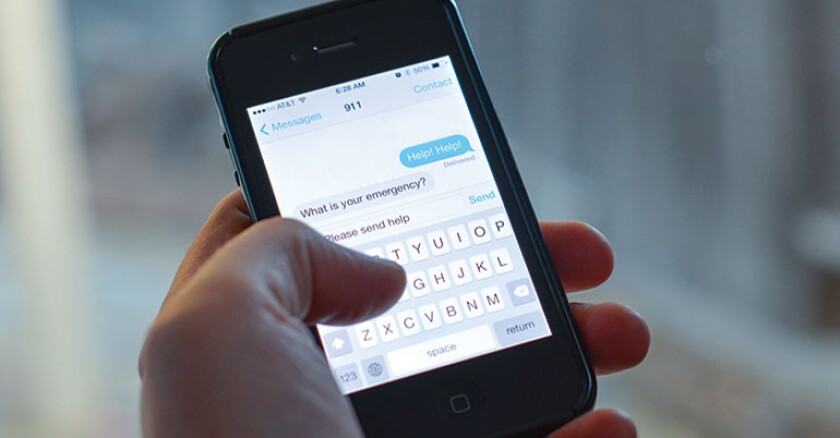Now that America’s four major wireless phone carriers have agreed to support text-to-911, however, expect to see the number of call centers accepting text messages grow rapidly, says Trey Forgety, director of government affairs at the National Emergency Number Association (NENA). “Nearly everyone is either working to move to text-to-911 or is planning how they are going to do it,” he says.
That’s the challenge for states and localities: figuring out the technology. Currently, emergency call centers have three options when it comes to receiving and sending text messages. The first involves the legacy system known as TTY, which just about everyone has and is used to receive messages from the deaf and disabled. The second option involves setting up a Web portal to display text messages. These two approaches are considered shortcuts. While they give call centers a quick on-ramp to accepting emergency calls by text, experts say, they fall short of what today’s technology can offer. Under each of these scenarios, phone calls would still be preferable because they have better location-targeting capabilities.
The third option is adopting so-called next-generation 911. The new technology runs on Internet protocol standards, which allows call centers to integrate not just text messages but also photos, video and other types of attachments. In addition, the technology would give dispatchers the ability to locate where a text message originated and would provide for scripted responses. This last part will make it so dispatchers don’t have to type out all their responses to callers -- streamlining the process.
But next-generation 911 isn’t cheap. The Federal Communications Commission estimates that to upgrade every call center in the country to next-generation 911 will cost nearly $3 billion. For now, that means call centers will have different capabilities. And until everyone adopts text-to-911, those who try to text an emergency call center that’s not equipped for texts will get a bounce-back message from the phone carriers, instructing them to call 911.
The Hamilton County, Ohio, Communications Center is one of the first to adopt next-generation 911 technology. The center handles 688,000 calls annually, and Jayson Dunn, the center’s director, says, “We were a bit anxious the move would overwhelm us with messages.” That hasn’t been the case. The county call center has received just four text messages so far, but they reflect why the move to text-to-911 is so important. In one case, Dunn says, a young woman was contemplating suicide and a friend urged her to call for help. She didn’t want her parents to hear her on the phone, though, so she texted instead.
Text-to-911 could be more beneficial than a voice call in a number of scenarios: helping those who don’t want to alert an intruder, aiding someone who has been kidnapped or engaging young people in trouble who don’t want to talk on the phone, but are comfortable texting. According to Dunn, text-to-911 will also have a huge impact on the disabled, especially the deaf community. “They will be able to communicate with us much more effectively during an emergency,” he says.
By making call centers text-ready, local governments can open the door to modernization, says NENA’s Forgety. He points out that many call centers still use a legacy technology, known as switched networks. Next-generation 911, however, is based on the Internet, which is much more flexible and adaptive to change. “This transition [to texting] will allow 911 call centers to deal with the kinds of technological changes they are going to have to routinely engage with in an Internet environment.”









